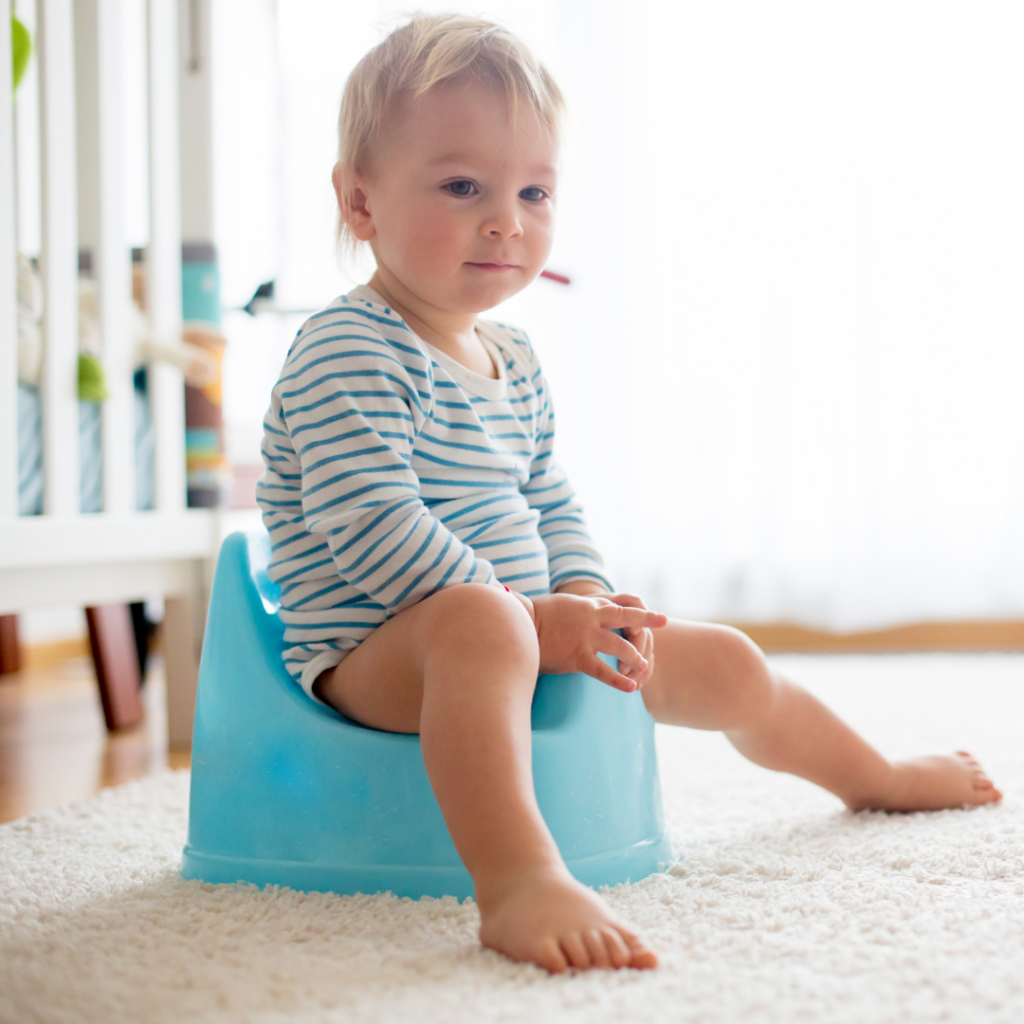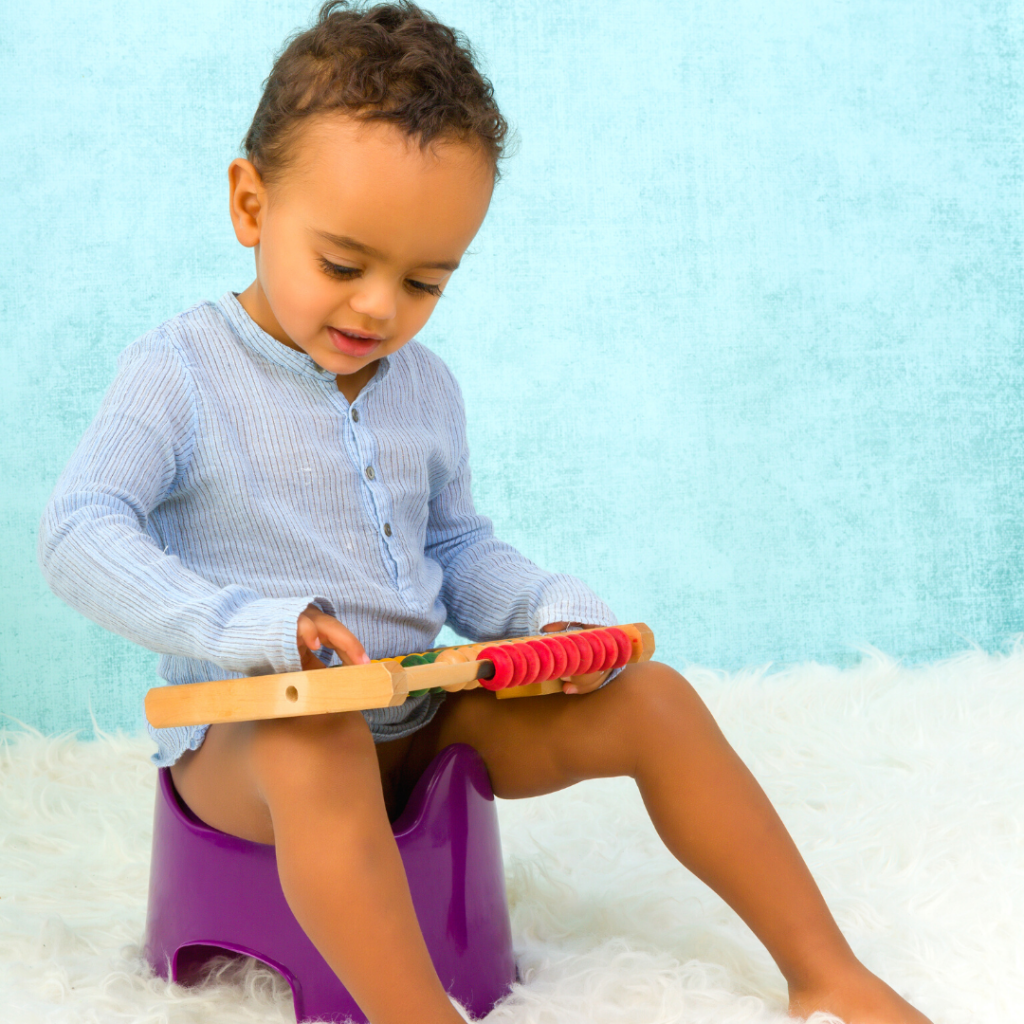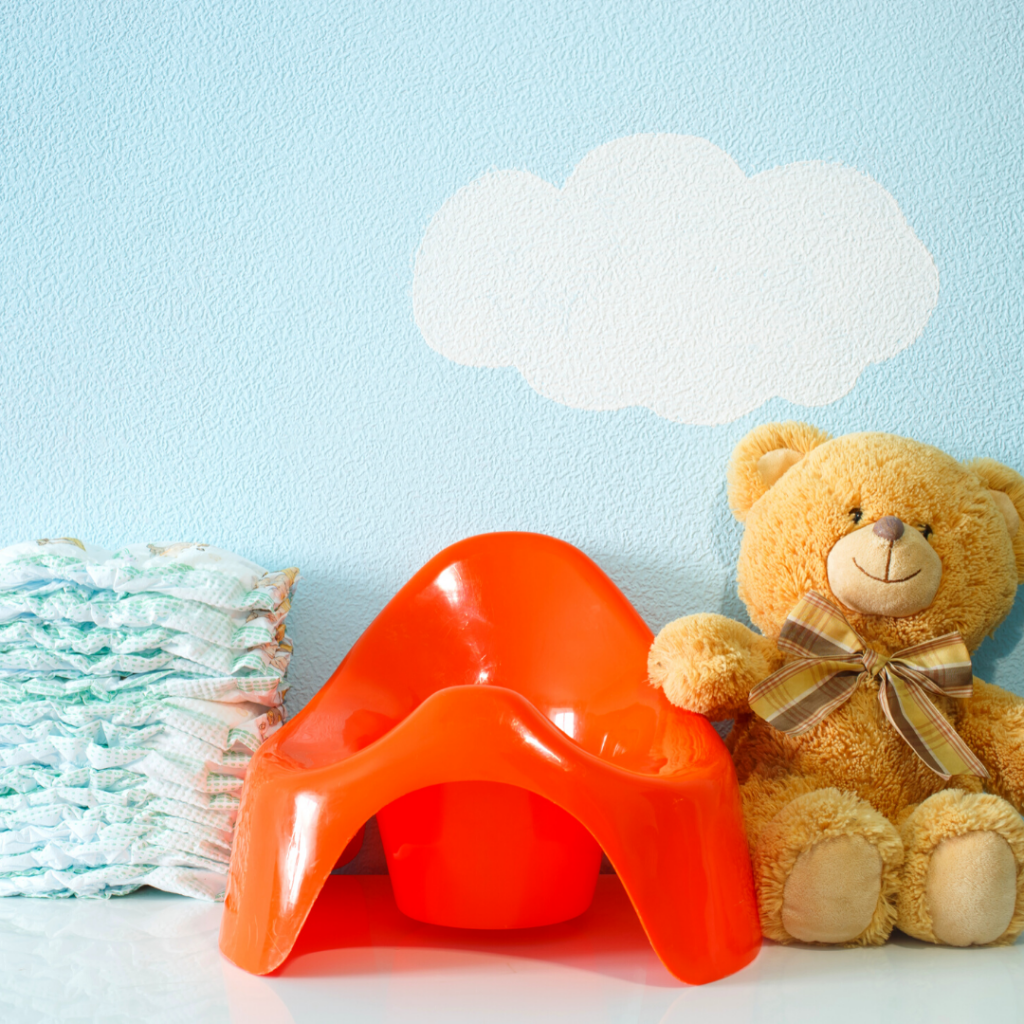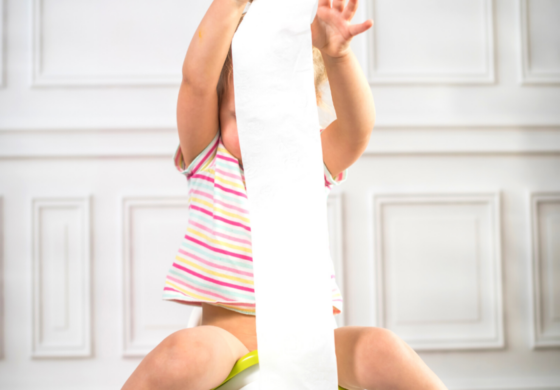Potty training can be an overwhelming and saturated market, with plenty of guidebooks and blogs promising a potty-trained child in 3 days or by 18 months old. This post is not about how to quickly train your child, but how to slowly set your child up for success and create as little stress for everyone as possible.
Doing it right is more important than doing it fast. This stage of development is when children learn bowel and bladder habits that may become deeply ingrained and persist for years to come. Negative habits may lead to stomach aches, incessant peeing, bedwetting, urine leakages, fecal leakages, constipation, and recurring urinary tract infections. This post will help guide you to avoid those pitfalls.

Wait until your child is ready
Children who show signs of readiness typically take less time, stress, and struggle to train than those who are not. Most children are physically and cognitively ready around age 3. Many people want to start training around age 2, but the closer to age 3 you wait, the smoother the transition will be for most children. One of the largest signs of readiness is that your child is capable of interrupting play activities to go use the potty.

Developmental awareness is key
They have the developmental awareness to recognize the urge, to stop what they are doing, and to go use the bathroom. If they are not ready for this step, they are at risk for learning to hold their pee and poop for long periods of time, putting them at risk for constipation, urinary tract infections, leakages, and discoordination in their pelvic floor muscles.
Make sure your child has healthy mushy poop every single day
If they do not have healthy poops, address this issue first before attempting to potty train. Healthy poops should look like hummus in a diaper or soft service ice cream in the toilet. Anything other than this may signal constipation. If the child is constipated, potty training will become a struggle. Worse, chronic constipation will cause their rectum to stretch out and lose the ability to sense the urge to eliminate.
If you suspect your child is constipated, limit processed foods, give plenty to drink, and ask your pediatrician about a possible referral to a gastroenterologist, dietitian, and/or pelvic floor therapist. Don’t start or resume training until your child is pooping large piles of mush daily.
Let your child guide the process
This is the easiest way to allow this milestone to be less stressful and less pressure-filled for the child and to give them autonomy over their own body. It also allows them to fully recognize what’s happening inside their own body. The goal of potty training is for the child to recognize when their body tells them it’s time to go! Encourage your child to set their own timeline: “let me know when you feel ready to try the potty” or “you get to decide when you’re ready for underwear.”
Follow the leader
Lead by example and allow your children to follow along as you use the bathroom. Help your child recognize and act on their urges to empty. Remind children it’s important to use the toilet out in public as well, not just in our own home.

Watch closely for signs of holding and be on the lookout for the potty dance
Squirming, curtsying, cross the legs, and walking or standing up on tiptoes. All of these techniques help override the signal to empty and allows the child to hold longer but this is not the goal. Emptying every 2 hours helps to encourage healthy habits and proper bladder development so if you see these signs, take your child to the toilet. Having a set potty schedule can help eliminate the potty dance and introduce a healthy routine for lifelong success.
Practice proper positioning on the potty using a tall stool or squatty potty.
Although modern toilets are incredibly convenient, they do not encourage or allow for full emptying because humans were designed to squat to poop. Having the stool allows the body to mimic a squatting position on top of the toilet, which allows for faster or more complete emptying.
Never shame or blame the child for accidents.
It is never their fault and it is not a conscious decision. Just like any other milestone, it takes time for children to learn this skill and to practice it for some time before it’s mastered. Accidents are a natural part of this process and if the child has none, it’s a sign that they are mastering holding and not toileting.
If your child has an accident, place the onus on the body part: “Uh oh, your bladder leaked!” or “uh oh, your rectum leaked!” If your child has too many accidents or seems to not notice they had an accident, contact your physician and ask for a referral to a specialist who can help identify if there are any underlying medical conditions or if pelvic floor or occupational therapy could help.
Potty training doesn’t end once the child is trained.
Parents must continue to be detectives and watch for signs of constipation. These include extra-large poops, a frequent or sudden rush to the toilet, skid marks, frequent accidents, bedwetting past the age of 4 or 5.
Reach out for help
Years of research document that early identification and treatment of potential delays or deficits when it comes to potty training challenges will result in a myriad of positive outcomes. If you have any questions or concerns with your child’s abilities or struggles we invite you to contact our office and schedule a free consultation! We are happy to listen to your concerns and help you decide on some of your next steps.

